The Impact of Digital Transformation on Customer Engagement And Satisfaction
Get the latest updates about our blog posts.
Subscribe so you don’t miss out!
Key Takeaways
- Digital transformation drives customer engagement by offering personalized experiences, faster support, and real-time communication.
- An omnichannel approach ensures seamless interactions across multiple touchpoints, enhancing customer satisfaction.
- Data-driven decision-making helps businesses understand customer needs and deliver targeted solutions.
- Overcoming challenges like resistance to change and data security requires strategic planning and strong leadership.
- Partnering with experts like Lizard Global can streamline the digital transformation journey and maximize its impact on customer satisfaction.
With how rapidly our digital world moves today, customer expectations and demand are constantly evolving. Businesses that fail to keep up, risk falling behind the competition. That’s why digital transformation has become an essential strategy for companies aiming to enhance customer engagement and satisfaction. By leveraging cutting-edge technologies, businesses can streamline their processes, deliver personalized experiences, and build stronger relationships with their customers.
In this blog, we will dive into how digital transformation can elevate customer engagement and satisfaction, while exploring real-world examples of successful digital transformation initiatives and how you can make the best use of it. Let’s go!
What Is Digital Transformation?
Digital transformation is the integration of digital technologies into all areas of a business, fundamentally changing how you operate and deliver value to customers. It’s not just about adopting new tools but about rethinking your entire business strategy to focus on customer-centric innovation.
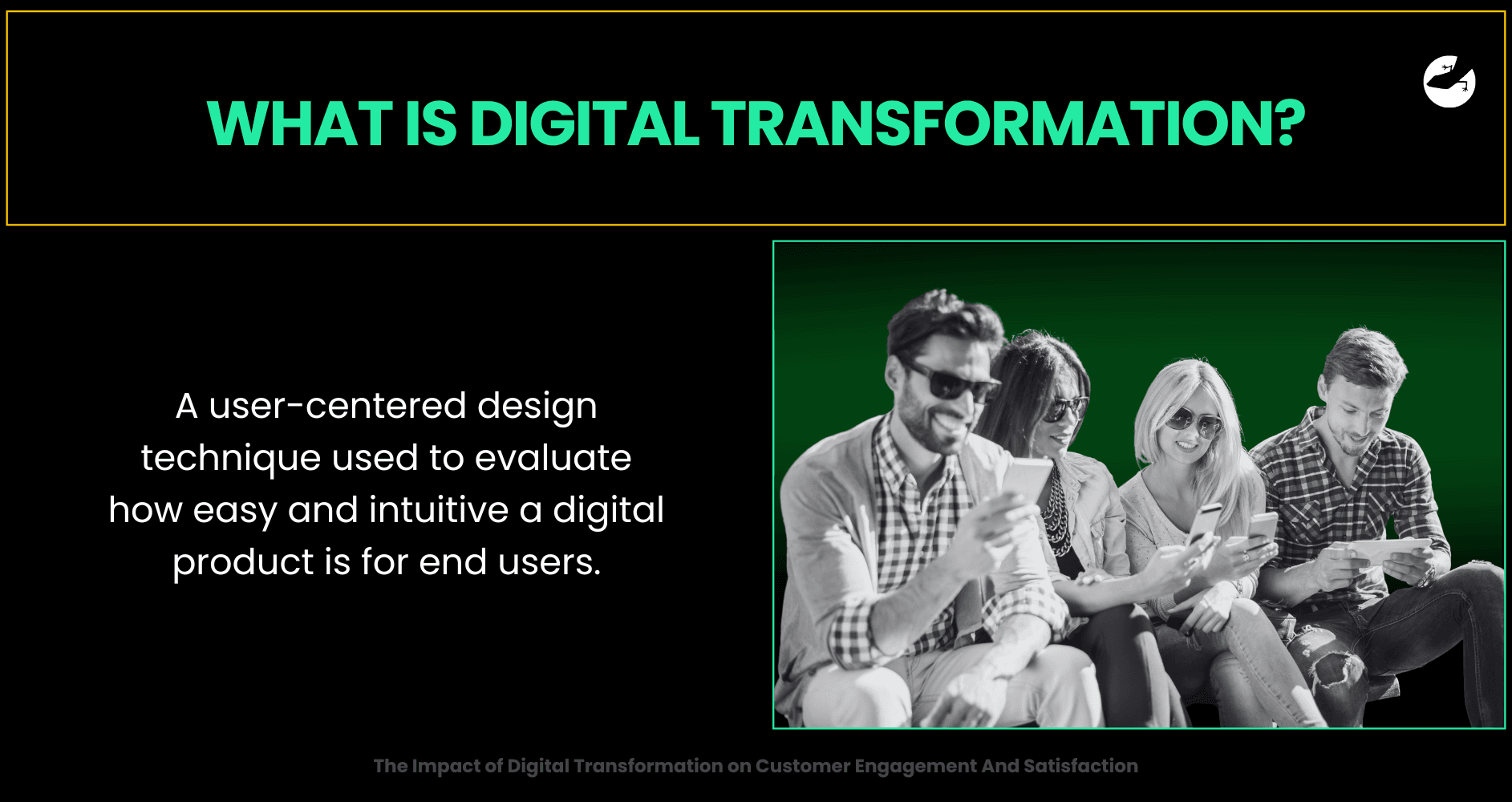
The ultimate goal is to create a seamless, efficient, and responsive customer experience. From chatbots and AI-driven customer support to data analytics and personalized marketing, digital transformation opens the door to a new era of engagement.
How Digital Transformation Enhances Customer Engagement and Satisfaction
Digital transformation fundamentally reshapes how businesses interact with their customers. It goes beyond just adopting new technologies; it’s about integrating digital solutions into every facet of your operations to create more meaningful, efficient, and personalized customer experiences.
Let’s explore some key ways digital transformation drives customer engagement and satisfaction:
1. Personalized Customer Experiences
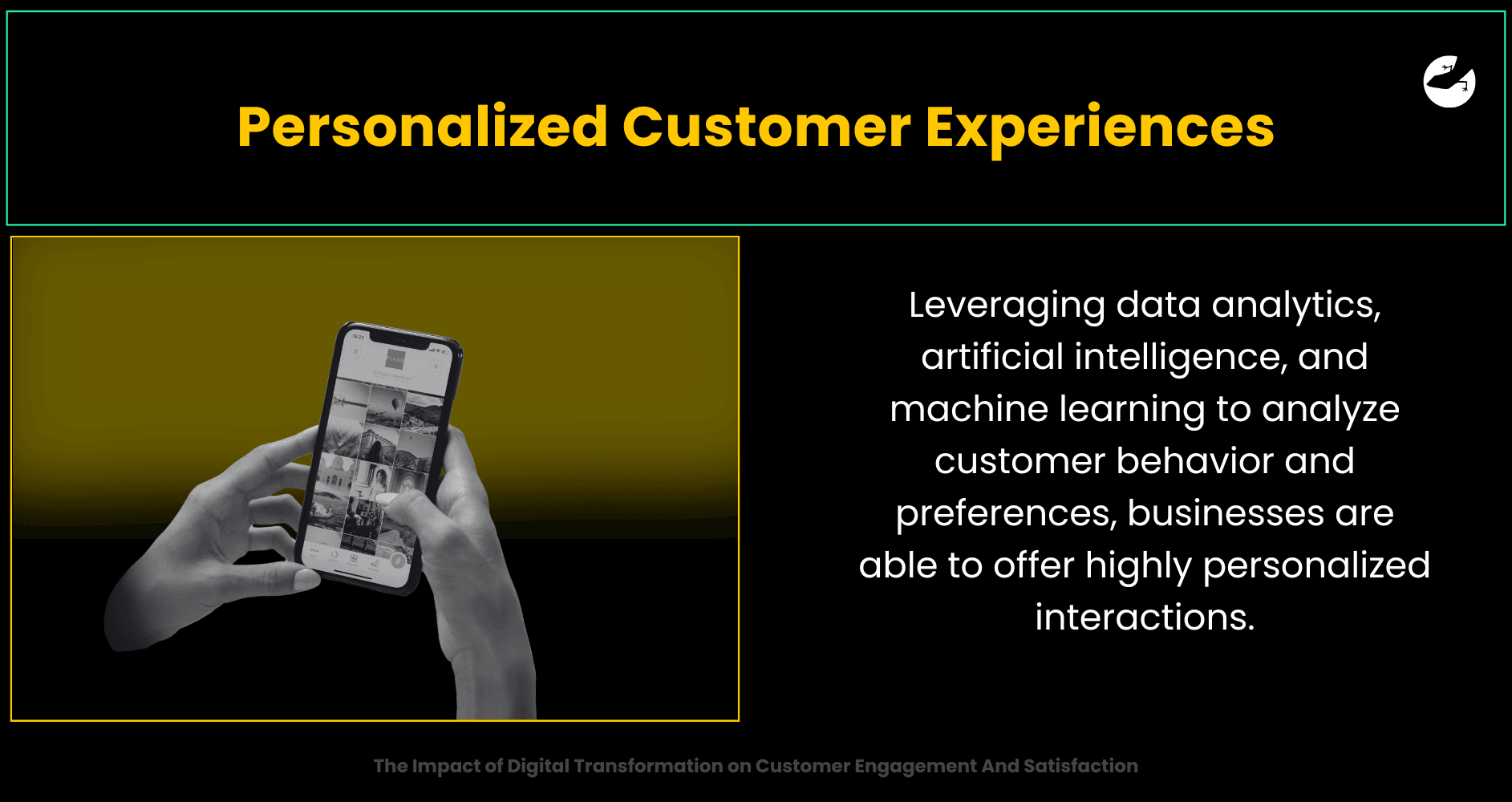
Modern consumers expect brands to understand their preferences and deliver tailored experiences. Digital transformation leverages data analytics, artificial intelligence, and machine learning to analyze customer behavior and preferences, enabling businesses to offer highly personalized interactions.
Personalization can take many forms, from recommending products based on past purchases to sending personalized marketing messages that resonate with the customer’s interests. This not only improves customer engagement but also fosters brand loyalty, as customers feel valued and understood.
Example:
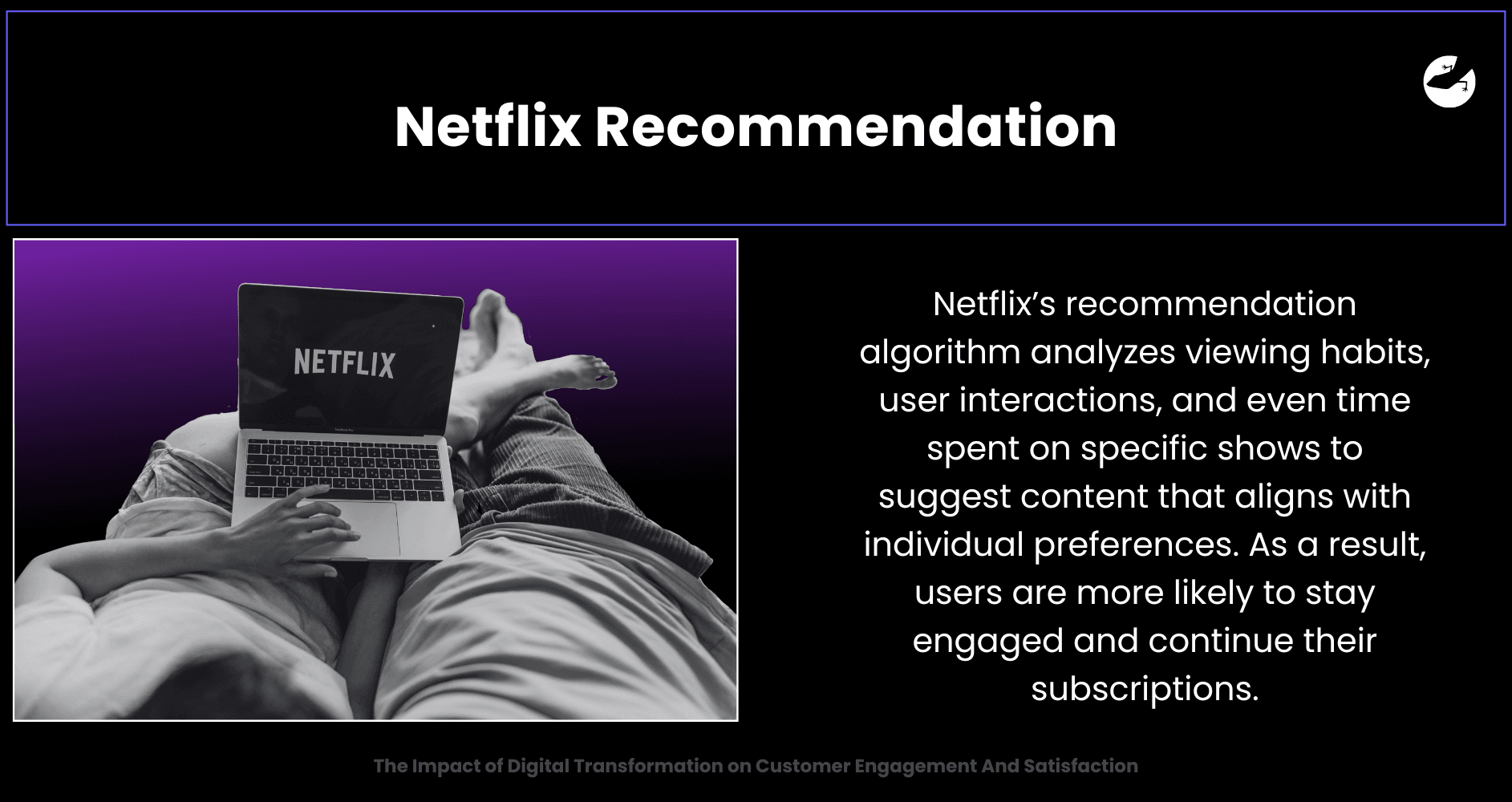
Netflix’s recommendation algorithm analyzes viewing habits, user interactions, and even time spent on specific shows to suggest content that aligns with individual preferences. As a result, users are more likely to stay engaged and continue their subscriptions.
2. Omnichannel Engagement

Today’s customers interact with brands through various channels—social media, websites, mobile apps, emails, and even in-store touchpoints. Digital transformation empowers businesses to create a seamless and consistent experience across all these channels.
An omnichannel approach ensures that customers can switch between devices or platforms without losing context. Whether they start an inquiry on social media and finish it on a mobile app, the experience remains cohesive and efficient.
Example:
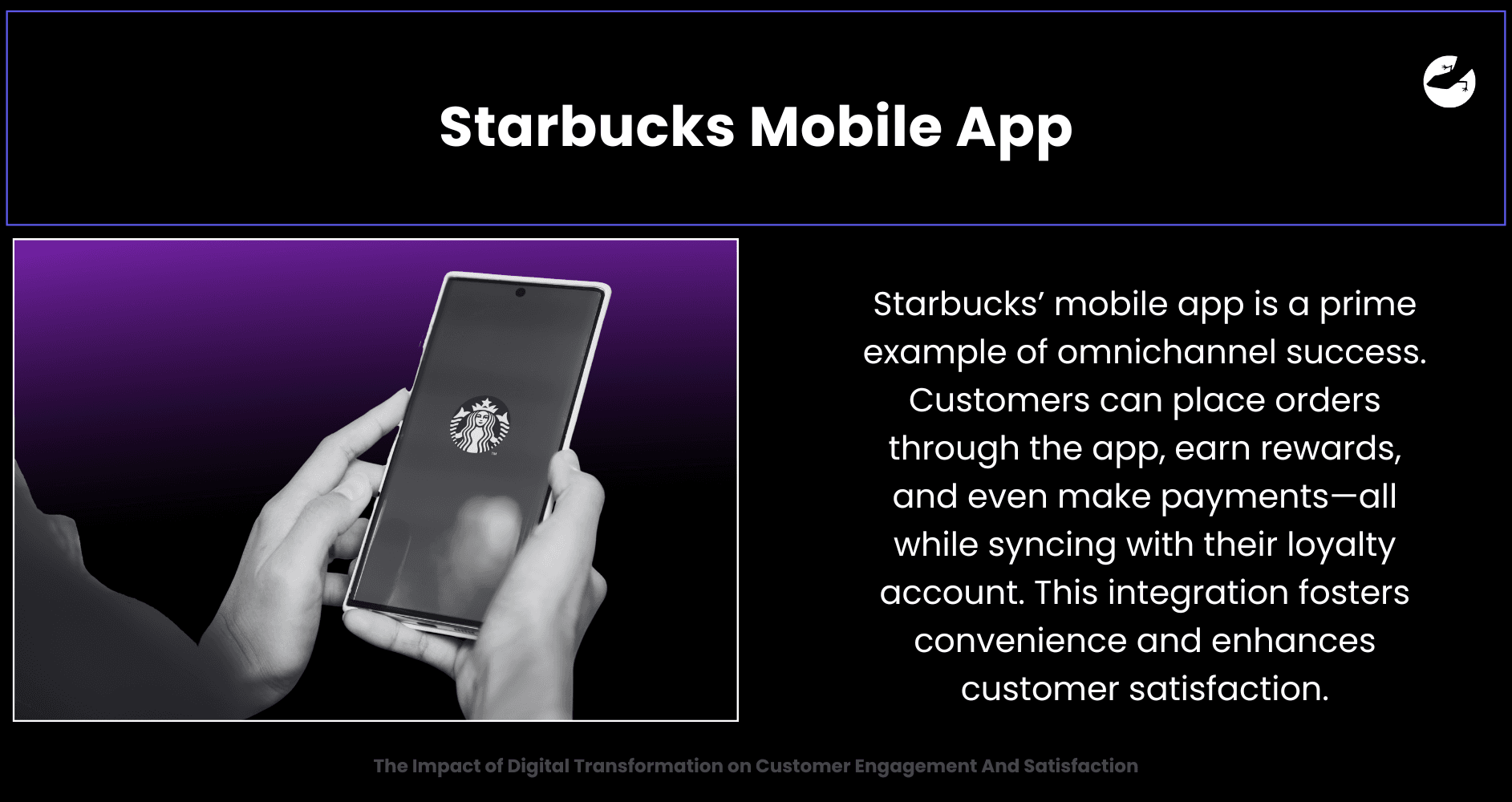
Starbucks’ mobile app is a prime example of omnichannel success. Customers can place orders through the app, earn rewards, and even make payments—all while syncing with their loyalty account. This integration fosters convenience and enhances customer satisfaction.
3. Faster and More Efficient Customer Support
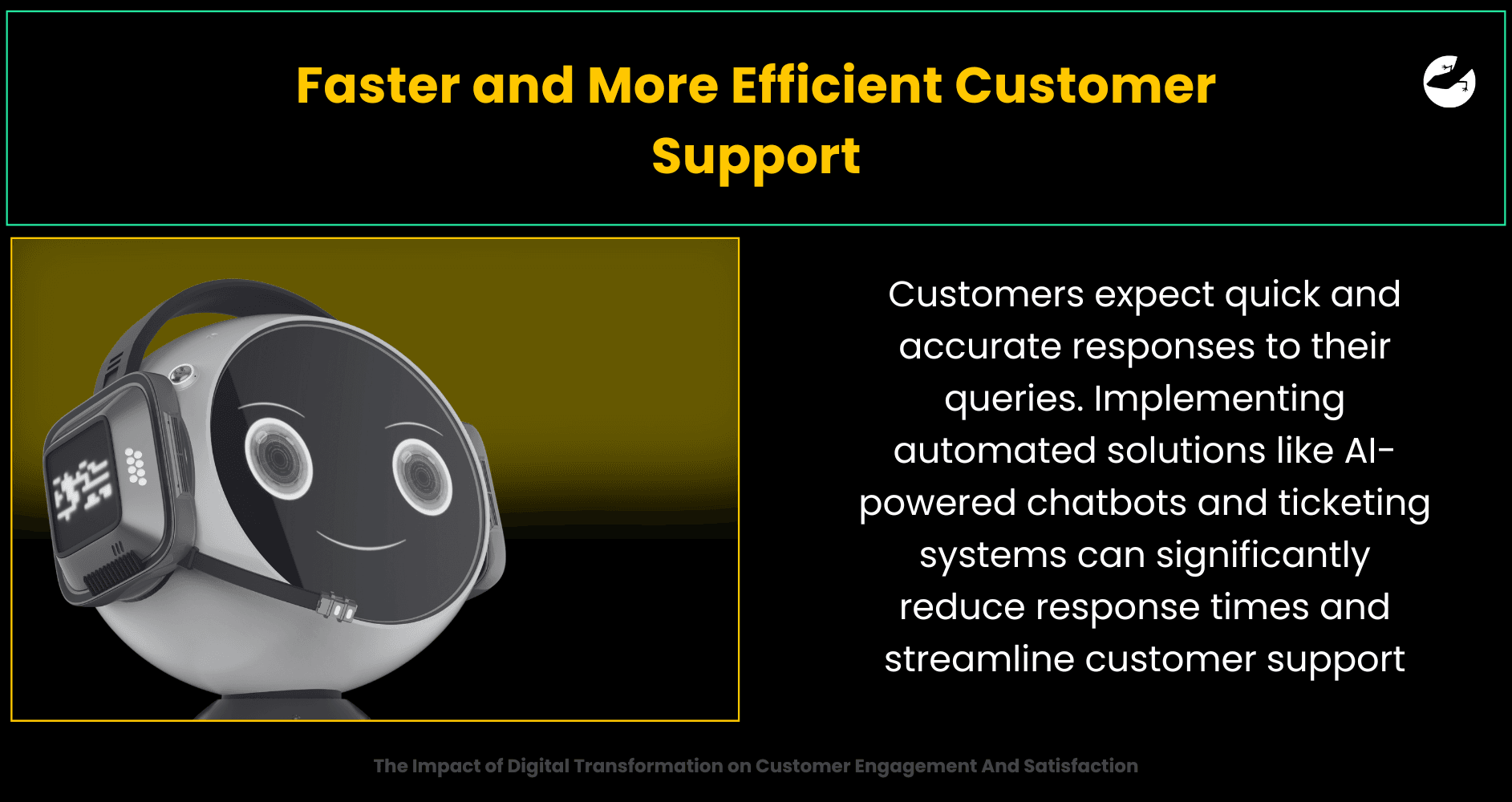
In the digital age, customers expect quick and accurate responses to their queries. Implementing automated solutions like AI-powered chatbots and ticketing systems can significantly reduce response times and streamline customer support.
Chatbots are available 24/7, providing instant responses to common queries, while complex issues can be seamlessly handed over to human agents. This approach not only saves time but also boosts customer satisfaction by resolving issues promptly.
Example:
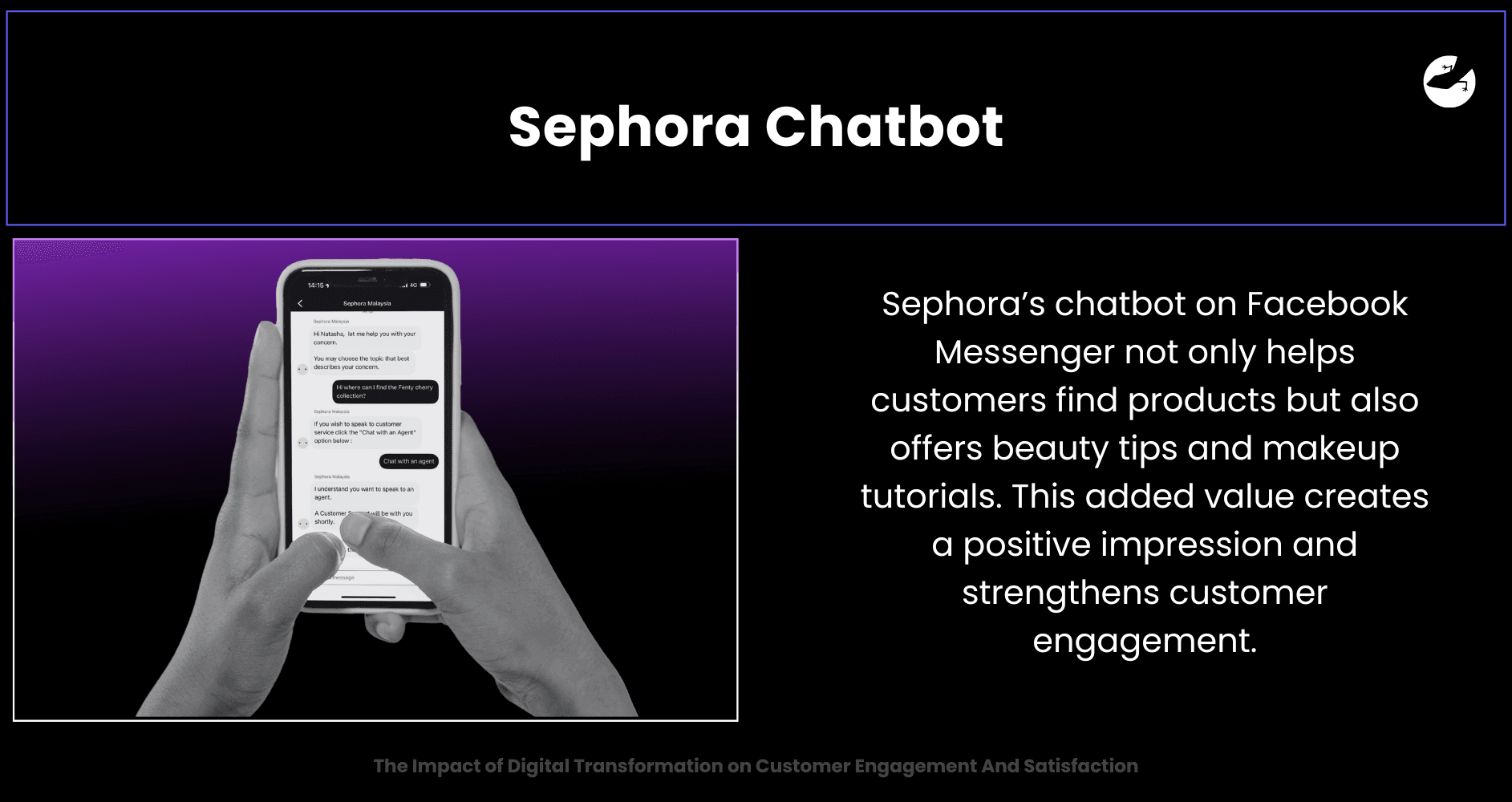
Sephora’s chatbot on Facebook Messenger not only helps customers find products but also offers beauty tips and makeup tutorials. This added value creates a positive impression and strengthens customer engagement.
4. Real-Time Communication and Feedback
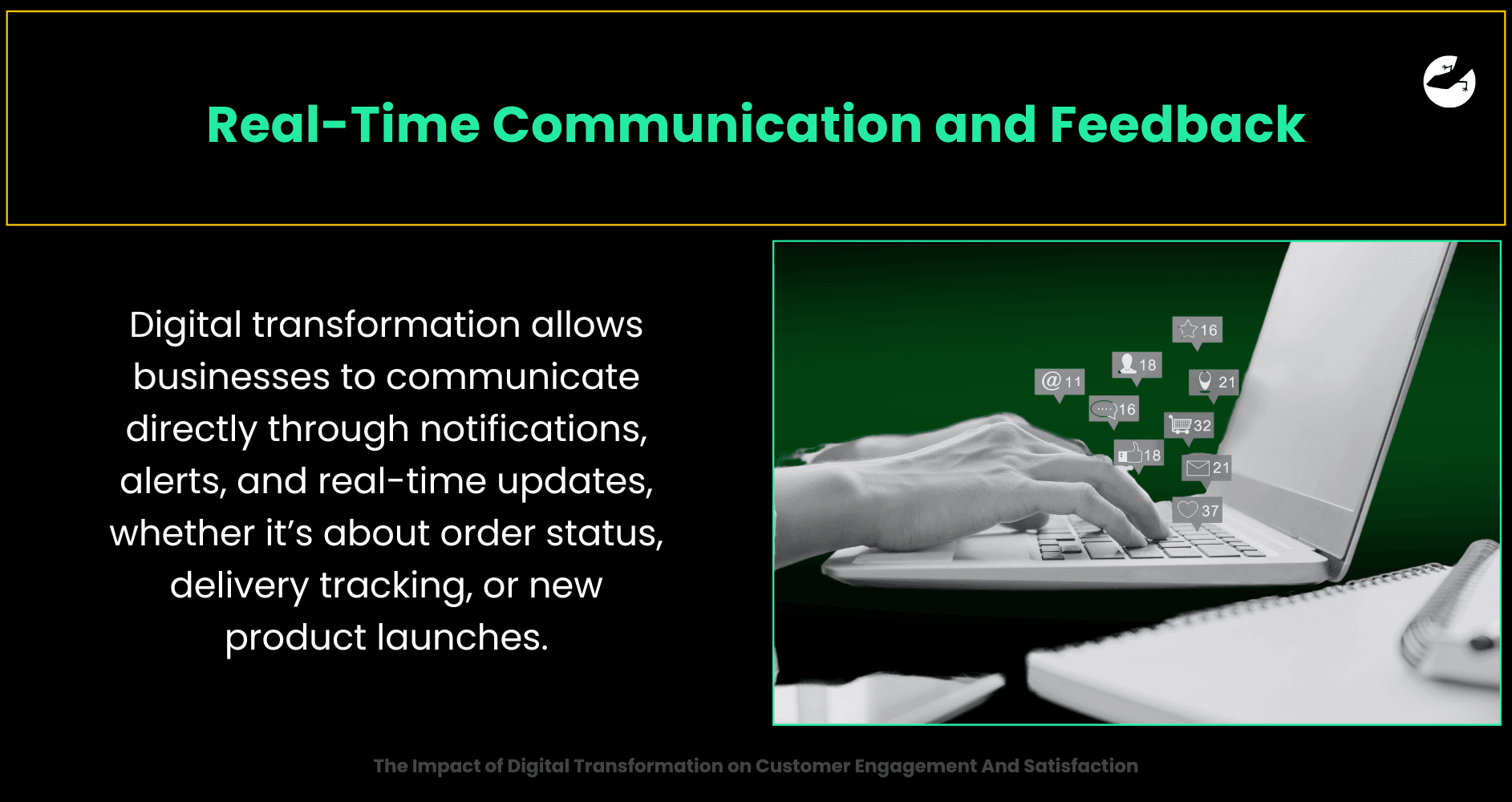
Keeping customers informed in real time enhances their overall experience. Digital transformation allows businesses to communicate directly through notifications, alerts, and real-time updates, whether it’s about order status, delivery tracking, or new product launches.
Moreover, collecting real-time feedback helps companies understand how customers perceive their services and products. By acting swiftly on feedback, businesses can demonstrate a commitment to customer satisfaction.
Example:
![]()
Domino’s Pizza Tracker is a great example of real-time communication done right. Customers can track their orders from preparation to delivery, giving them a sense of control and reducing uncertainty.
5. Data-Driven Insights for Improved Decision Making
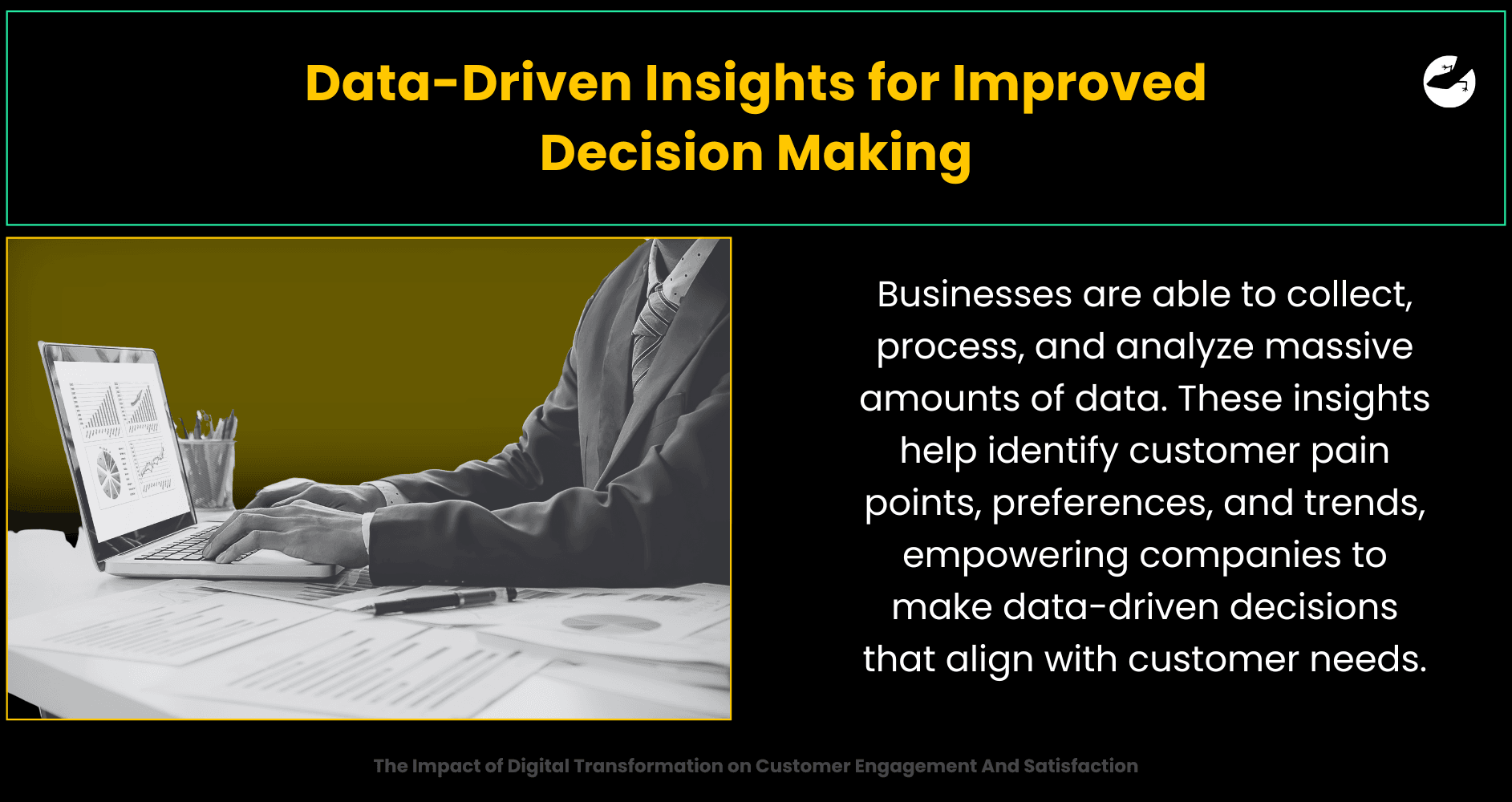
Digital transformation allows businesses to collect, process, and analyze massive amounts of data. These insights help identify customer pain points, preferences, and trends, empowering companies to make data-driven decisions that align with customer needs.
Example:

Coca-Cola leverages big data to monitor social media conversations and consumer preferences. This data helps them craft targeted marketing campaigns and introduce new products that meet evolving demands, keeping customers engaged and satisfied.
6. Building Trust Through Transparency

Transparency is a cornerstone of customer satisfaction, and digital transformation makes it easier to maintain open communication. Real-time tracking, detailed order histories, and instant updates give customers confidence in your brand.
By making information easily accessible and keeping customers informed at every step, businesses can build trust and foster long-lasting relationships.
Example:
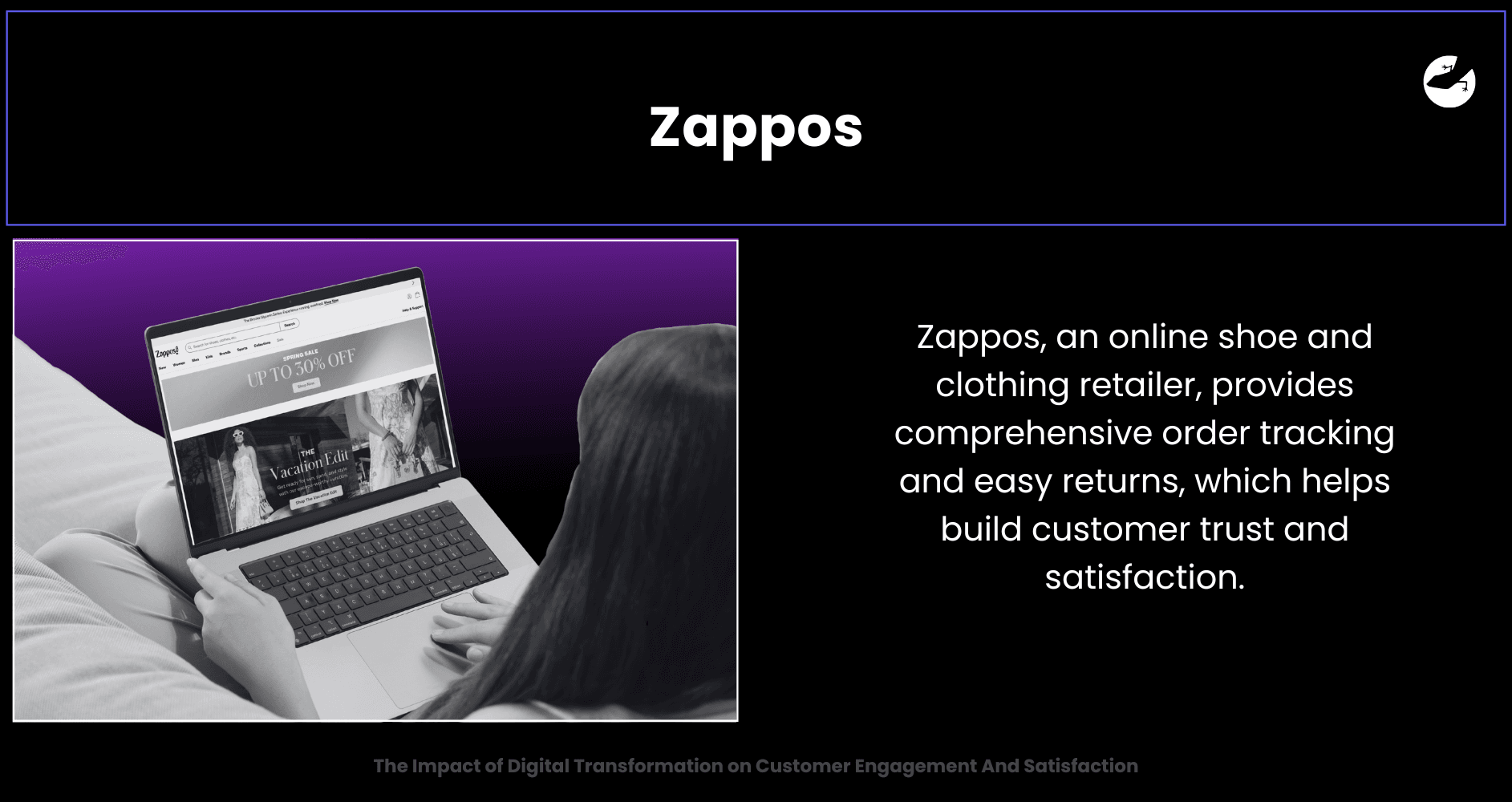
Zappos, an online shoe and clothing retailer, provides comprehensive order tracking and easy returns, which helps build customer trust and satisfaction.
7. Continuous Improvement Through Digital Feedback Loops

Digital transformation facilitates continuous improvement by gathering insights from every customer interaction. Automated feedback collection tools and real-time analytics allow businesses to measure customer satisfaction and make timely adjustments.
By implementing a feedback loop, companies can act quickly to resolve complaints, address concerns, and even implement customer suggestions. This proactive approach not only improves customer satisfaction but also shows that the company values its customers' opinions.
Example:
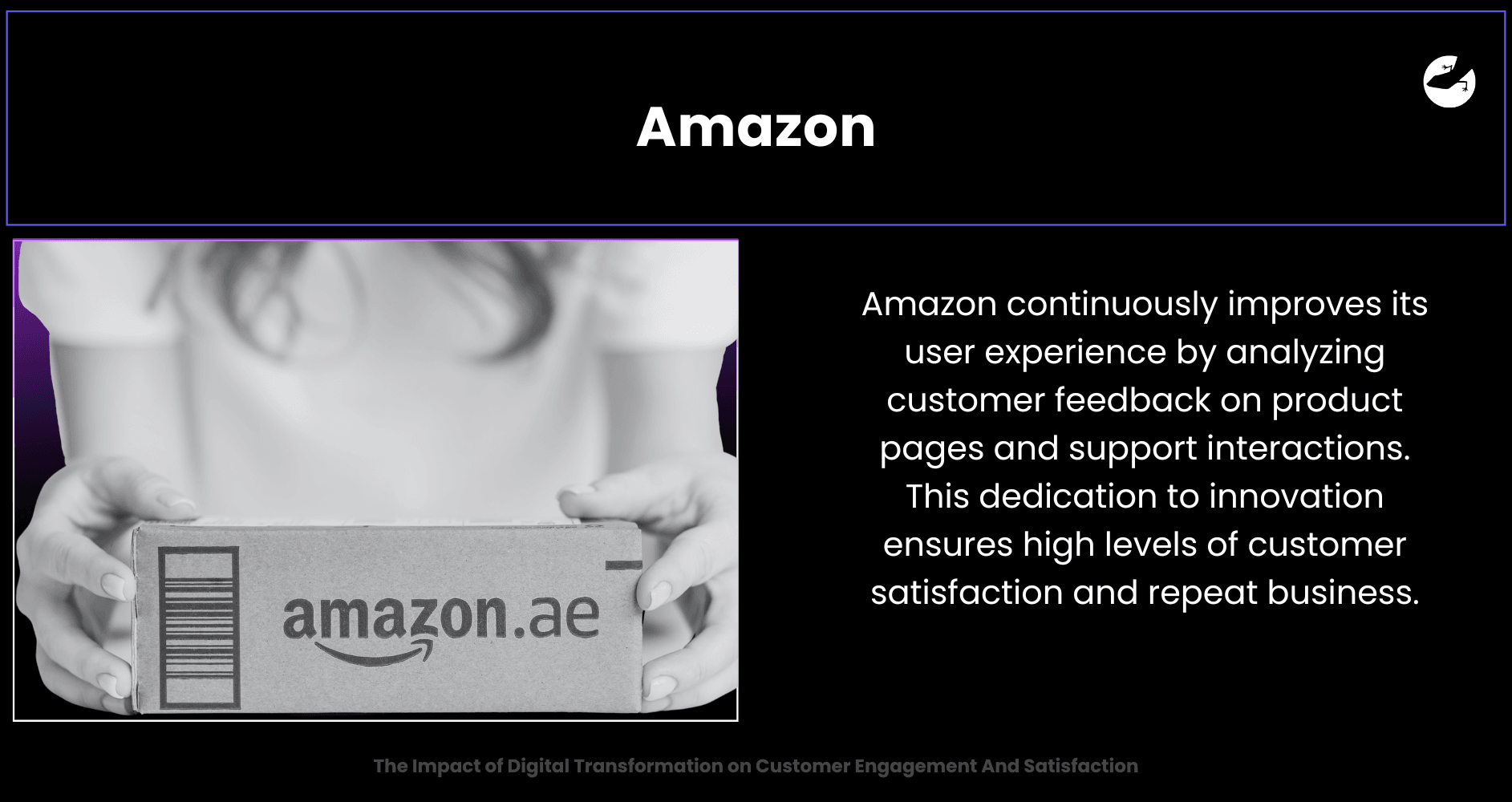
Amazon continuously improves its user experience by analyzing customer feedback on product pages and support interactions. This dedication to innovation ensures high levels of customer satisfaction and repeat business.
Want to find out how much it costs to build your dream app or web app?
Overcoming Challenges in Digital Transformation
While the benefits of digital transformation are undeniable, the journey itself can be complex and filled with challenges. From resistance to change to data security concerns, businesses must be prepared to navigate various obstacles to achieve successful transformation. Let’s take a closer look at some of the most common challenges and how to overcome them.
1. Resistance to Change

One of the biggest challenges in digital transformation is internal resistance. Employees and even management may be hesitant to adopt new technologies or change established processes. This resistance often stems from fear of the unknown, lack of training, or concerns about job security.
How to Overcome It:
To address resistance, it’s essential to foster a culture of innovation and continuous learning. Involve employees early in the transformation process, clearly communicate the benefits, and provide comprehensive training to build confidence in using new tools and systems. Offering support throughout the transition helps reduce anxiety and boosts adoption rates.
Example:
When General Electric (GE) embarked on its digital transformation journey, it invested heavily in training and upskilling its workforce. By demonstrating how digital tools would enhance productivity rather than replace jobs, GE gained employee buy-in and significantly reduced resistance.
2. Data Privacy and Security Concerns

Digital transformation often involves collecting and processing large volumes of customer data, raising critical concerns about data privacy and security. A single breach can damage a company’s reputation and erode customer trust.
How to Overcome It:
Implement robust cybersecurity measures, including encryption, multi-factor authentication, and regular security audits. Additionally, comply with data protection regulations such as the GDPR, PDPA or CCPA to ensure responsible data handling. Being transparent with customers about how their data is used can also build trust and reduce apprehension.
Example:
Apple has prioritized user privacy as part of its digital strategy by implementing features like App Tracking Transparency (ATT) and providing clear information about data usage. This proactive approach has strengthened customer trust and brand loyalty.
3. Integration with Legacy Systems
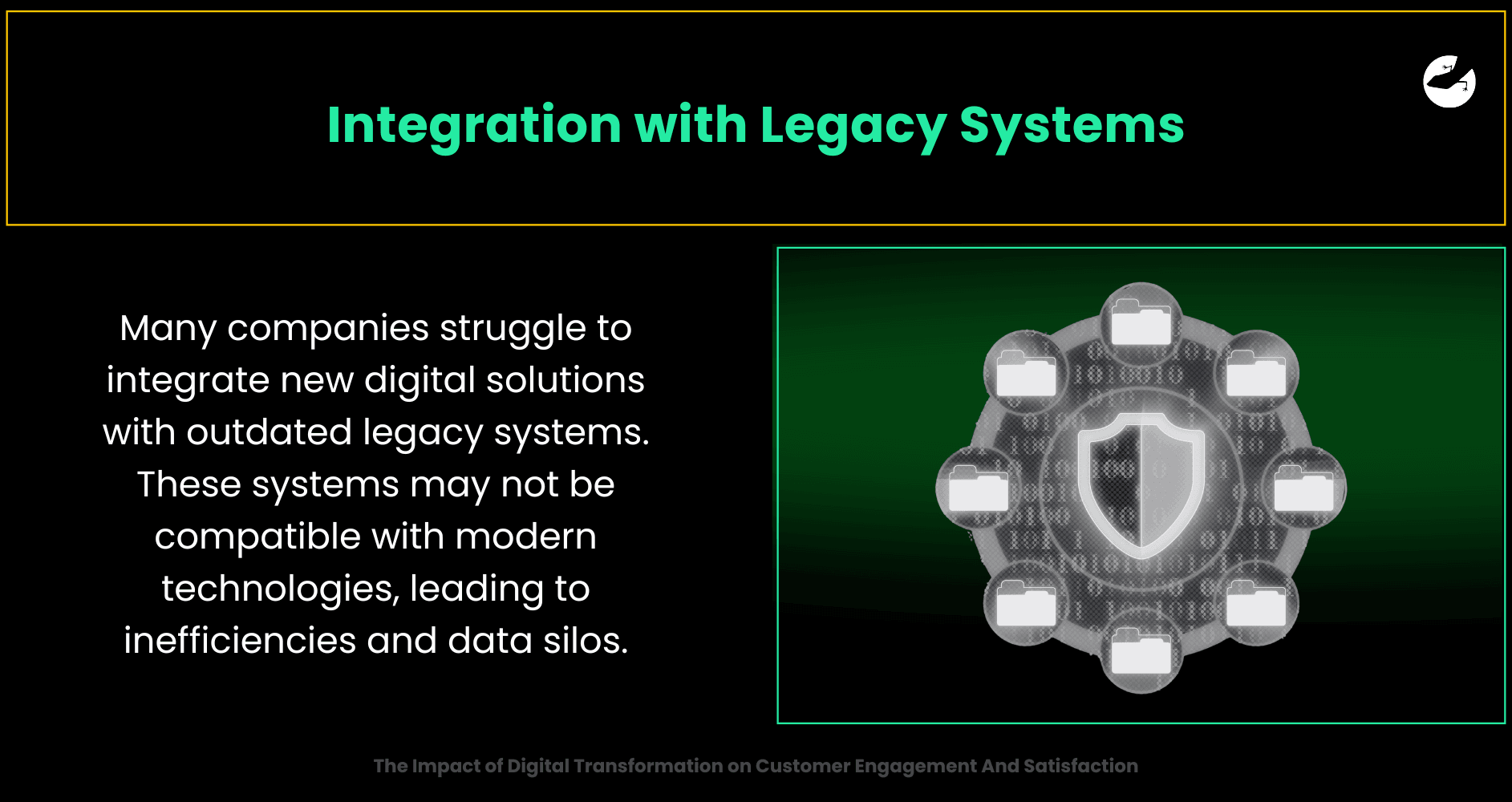
Many companies struggle to integrate new digital solutions with outdated legacy systems. These systems may not be compatible with modern technologies, leading to inefficiencies and data silos.
How to Overcome It:
Take a phased approach to digital transformation by gradually modernizing legacy systems rather than attempting a complete overhaul at once. Implement APIs and middleware solutions to bridge the gap between old and new systems, allowing for smoother integration.
Example:
British Airways faced significant challenges integrating its legacy booking systems with new digital platforms. By adopting middleware solutions and phased integration, the airline managed to modernize its customer experience without causing major disruptions.
4. Lack of a Clear Digital Strategy

Jumping into digital transformation without a clear strategy can lead to fragmented efforts and wasted resources. Businesses need a roadmap that aligns digital initiatives with their core goals and customer expectations.
How to Overcome It:
Start by defining your digital transformation objectives and identifying key performance indicators (KPIs) to measure success. Develop a comprehensive strategy that outlines the technologies to be adopted, the timeline for implementation, and the desired outcomes. Involving stakeholders from different departments ensures that the strategy aligns with broader business goals.
Example:
Nike’s successful digital transformation strategy focused on direct-to-consumer (DTC) engagement and leveraging data insights. By clearly defining its vision and focusing on omnichannel experiences, Nike enhanced customer engagement and drove significant growth.
5. Inadequate Skills and Expertise
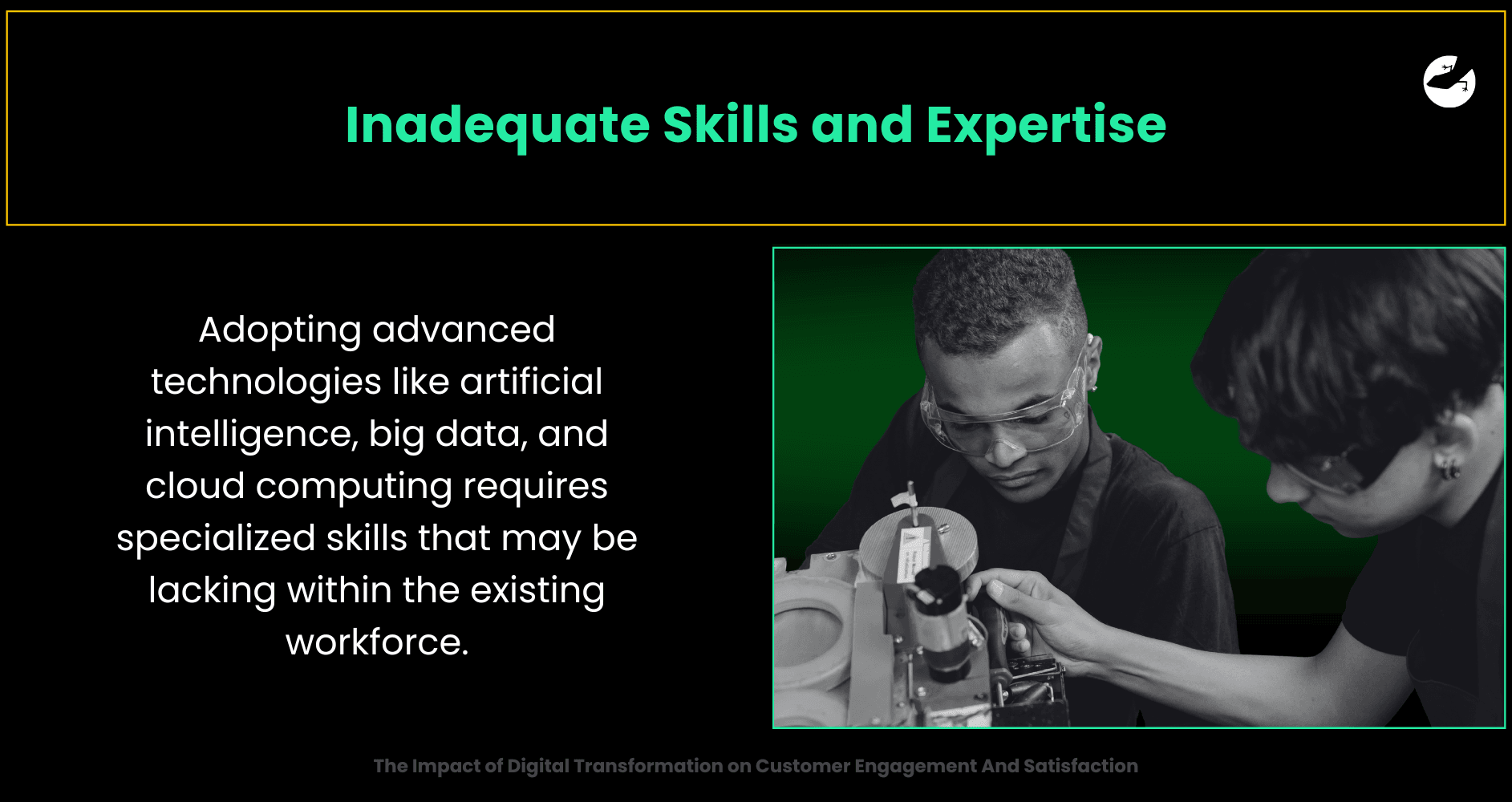
Adopting advanced technologies like artificial intelligence, big data, and cloud computing requires specialized skills that may be lacking within the existing workforce. A lack of expertise can delay transformation and compromise the quality of implementation.
How to Overcome It:
Invest in talent development by offering training programs, workshops, and certifications. Alternatively, consider partnering with digital transformation experts to fill skill gaps and ensure smooth implementation. Building a cross-functional team that blends technical expertise with business acumen is crucial for long-term success.
Example:
Walmart invested heavily in training and upskilling its workforce as part of its digital transformation journey, particularly in areas related to e-commerce and data analytics. This approach empowered employees to adapt to new technologies and contributed to the company's digital success.
6. Measuring ROI and Success

Many companies struggle to quantify the impact of digital transformation, especially when results take time to materialize. Without clear metrics, it’s challenging to determine whether digital initiatives are delivering value.
How to Overcome It:
Define measurable KPIs from the outset, such as customer satisfaction scores, engagement metrics, and revenue growth. Use data analytics to track progress and identify areas for improvement. Regularly evaluating performance helps ensure that digital transformation efforts stay aligned with business objectives.
Example:
McDonald’s used data analytics to assess the impact of its digital kiosks and mobile ordering systems. By tracking customer feedback and sales data, the company fine-tuned its strategy and achieved measurable improvements in customer satisfaction and revenue.
7. Maintaining Customer-Centric Focus
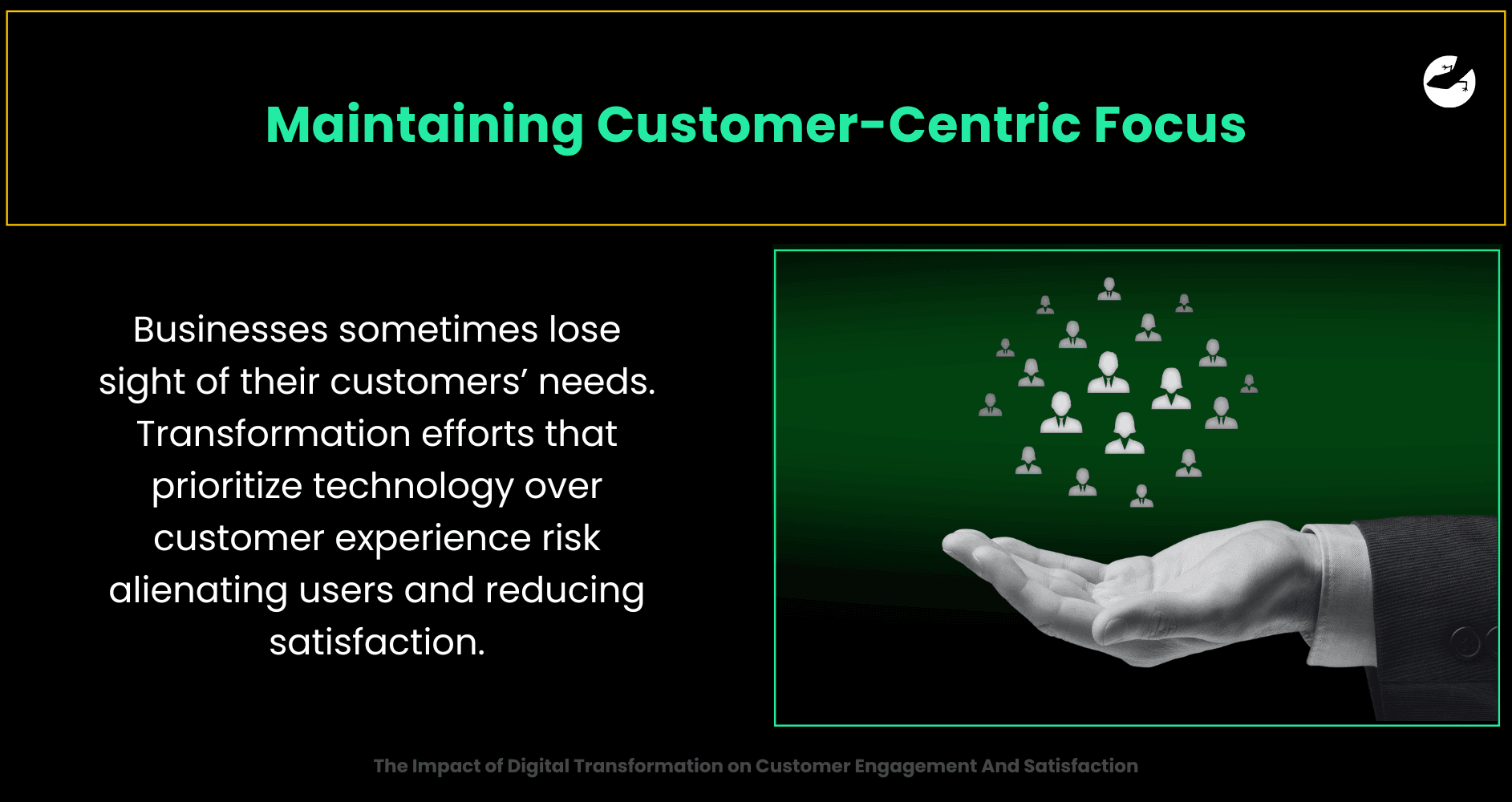
In the rush to implement new technologies, businesses sometimes lose sight of their customers’ needs. Transformation efforts that prioritize technology over customer experience risk alienating users and reducing satisfaction.
How to Overcome It:
Keep customers at the heart of your transformation strategy. Use customer feedback, journey mapping, and persona development to ensure that digital solutions genuinely enhance the user experience. Test new implementations with real users before full deployment to identify potential pain points.
Example:
Disney’s MagicBand, an RFID-enabled wristband, enhances the customer experience by integrating park access, hotel room entry, and payment features into one seamless device. By focusing on customer convenience, Disney successfully merged digital innovation with a customer-centric approach.
How Lizard Global Can Help Your Business Thrive
At Lizard Global, we specialize in guiding businesses through digital transformation with tailor-made solutions that enhance customer engagement and satisfaction. Our expertise in software development, data analytics, UI/UX design, and digital strategy empowers your business to:
- Deliver Personalized Customer Experiences: Utilize data-driven insights to craft individualized interactions.
- Streamline Customer Support: Implement AI chatbots and efficient ticketing systems.
- Enhance Omnichannel Engagement: Create consistent experiences across all digital touchpoints.
- Leverage Real-Time Data: Make informed decisions with advanced analytics.
- Build Transparent Communication Channels: Strengthen customer relationships with clear, real-time updates.
By leveraging digital transformation, your business can not only meet but exceed customer expectations. Let Lizard Global be your partner in building a customer-centric future. Ready to elevate your customer engagement and satisfaction through digital transformation? Contact Lizard Global today to start your journey.




